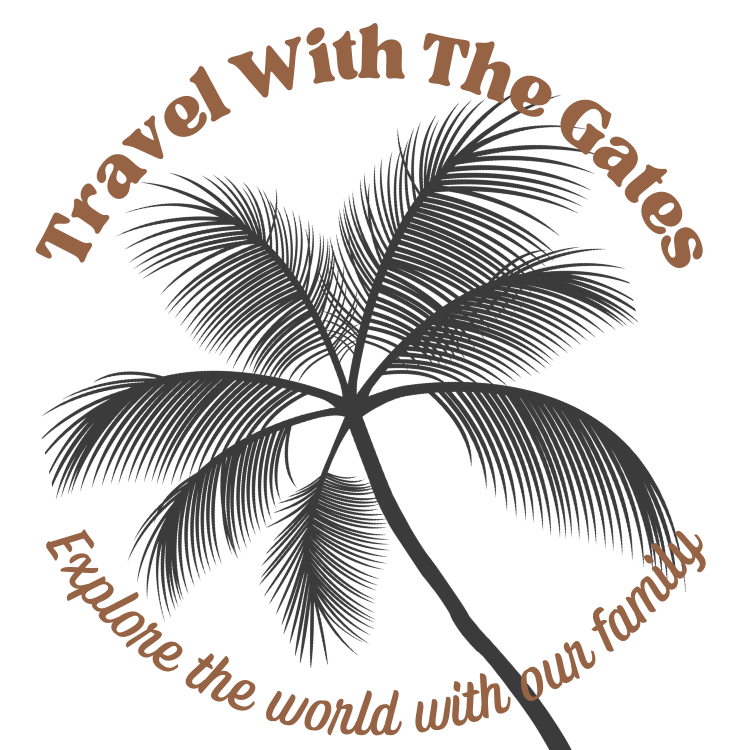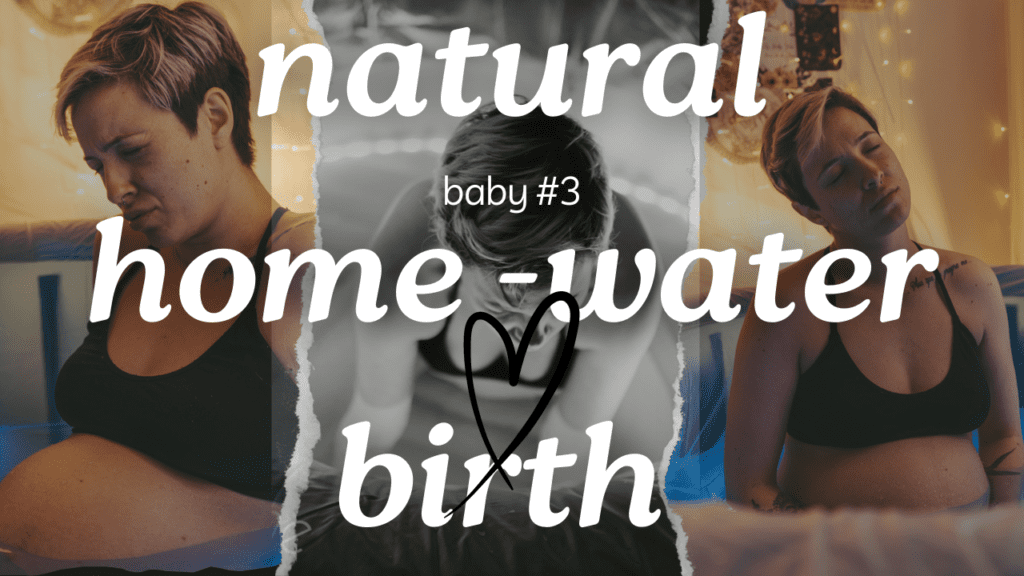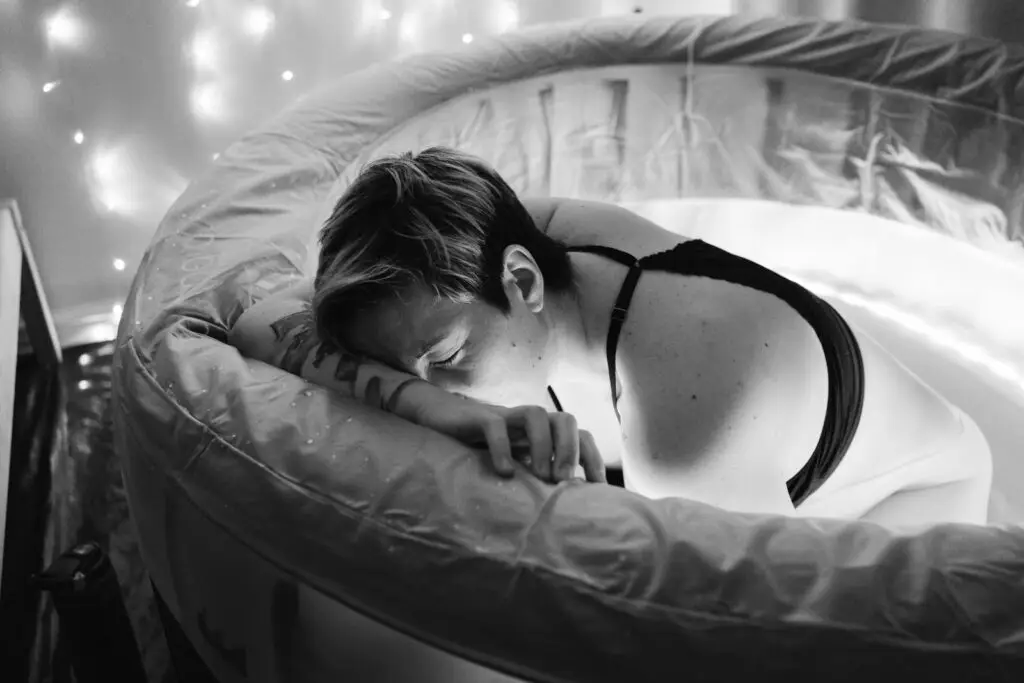Table of Contents
The Placenta, a Wonder of Life
Before having children, my knowledge of the placenta was limited and, truthfully, uninformed. I remember the first time I saw a placenta—it wasn’t human but from a sheep. I was young, uneducated about its purpose, and, like most people, I felt disgusted. At the time, I didn’t truly understand what this incredible organ represents.
Everything changed when I embarked on my journey into motherhood. Experiencing pregnancy, the loss of two angel babies(Robertsonian Balanced Translocation), a hospital birth, and two homebirths allowed me to see the placenta in a completely different light. It’s not just an organ; it’s a lifeline, a sacred bridge between mother and baby, and even a connection to something much greater—the ancient wisdom of life itself.
Witnessing my own placentas, especially during my homebirths, filled me with awe and deep respect. Since then, I’ve felt a profound connection to this miraculous organ, one that I wanted to share with my children. Having boys, I’ve also found it important to normalize the placenta as part of life and birth, teaching them to understand and appreciate its role rather than shy away from it.
In this blog, I’ll share everything I’ve learned and experienced about the placenta—a celebration of its wonder and role in life. I hope to inspire you to look at this extraordinary organ with the same sense of awe that I now hold for it.
Explore practical ways to honor and utilize your placenta here.
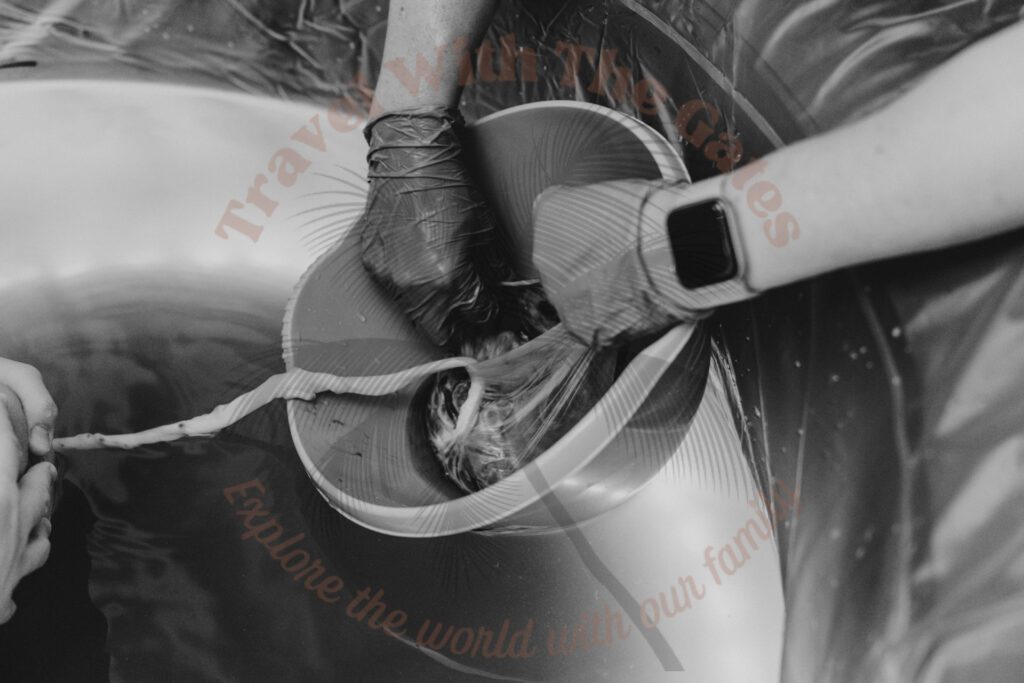
What Is the Placenta?
The placenta is one of the most extraordinary organs in the human body, yet it remains one of the least understood. It is a temporary organ that begins to form shortly after conception and grows alongside the baby, serving as a lifeline between the mother and her child.
This disc-shaped organ attaches to the wall of the uterus and connects to the baby through the umbilical cord. Its role is multifaceted: it provides oxygen and nutrients to the baby, removes waste products, and even produces essential hormones to support pregnancy. Remarkably, the placenta acts as a protective barrier, shielding the baby from harmful substances while allowing vital nutrients to pass through.
What makes the placenta even more awe-inspiring is its adaptability. It adjusts to the needs of both the baby and the mother, maintaining a delicate balance to ensure the health and well-being of both. This intricate dance between mother and baby, facilitated by the placenta, is nothing short of miraculous.
Despite its essential role, the placenta is often overlooked or misunderstood. Many people, like I once did, think of it as a mere byproduct of birth. But when you begin to understand its complexity and significance, it becomes clear that the placenta is a true marvel of life.
How Does the Placenta Develop During Pregnancy?
Placental development begins shortly after conception, when the placenta starts to form alongside the embryo. During early pregnancy, the placenta attaches itself to the uterine wall, initiating a connection with the developing fetus. As the placenta grows, its structure becomes increasingly complex, creating a network of blood vessels to ensure an optimal supply of nutrients and oxygen.
Throughout pregnancy, the human placenta plays an essential role in maintaining a healthy pregnancy by adapting to the baby’s growing needs. It also acts as a barrier to harmful substances while allowing the placenta to provide antibodies and nutrients to the baby. The placenta functions as a bridge between the mother and baby, demonstrating its remarkable adaptability and complexity.
Functions of the Placenta: A Multifaceted Marvel
The placenta is much more than a passive organ—it is an active, dynamic lifeline that performs multiple critical functions during pregnancy. Its primary role is to sustain and protect the baby while simultaneously supporting the mother’s body in adapting to pregnancy.
1. Nutrient and Oxygen Transfer
The placenta acts like a custom-built delivery system, pulling essential nutrients from the mother’s bloodstream—proteins, fats, vitamins, and minerals—and transferring them to the baby. What’s remarkable is that it tailors the nutrients to match the baby’s developmental stage. For example, as the baby’s brain grows rapidly in the third trimester, the placenta increases the supply of vital fats to support this process.
2. Waste Removal
Like a silent janitor, the placenta ensures the baby’s environment stays clean. It removes waste products generated by the baby, like carbon dioxide and urea, and sends them back into the mother’s bloodstream for elimination. This constant exchange keeps the baby’s space as safe and balanced as possible.
3. Hormone Production
The placenta produces a cocktail of hormones that regulate pregnancy and prepare the body for childbirth. One fascinating hormone it produces is human placental lactogen (hPL), which not only helps the baby grow but also adjusts the mother’s metabolism, ensuring a steady supply of energy for both. Think of it as the ultimate multitasker—keeping the mother’s and baby’s systems working in harmony.
4. Immune Protection
The placenta acts as the baby’s first shield. It selectively filters out harmful substances and pathogens while allowing beneficial antibodies to pass through, providing the baby with early immunity. For example, antibodies transferred through the placenta give newborns protection against diseases the mother has already encountered, offering a head start in the world.
5. Communication Between Mother and Baby
Perhaps most fascinating is the placenta’s role as a communicator. It exchanges biochemical signals between mother and baby, acting almost like a “smart organ.” Research has shown that the placenta can adapt its function based on signals it receives. If the baby needs more nutrients or oxygen, the placenta adjusts its operations accordingly, demonstrating an almost intuitive connection between the two.
An Unbelievable Fact: The Placenta’s “Memory”
Here’s something truly mind-blowing: scientists have discovered that the placenta contains fetal cells, which sometimes cross into the mother’s body. These cells can remain in her body for decades, a phenomenon known as microchimerism. It’s as though the placenta leaves a physical reminder of the baby long after its work is done—another testament to its remarkable design.
“There is a wisdom in the body that is older and more reliable than any thought.”
— John Patrick Shanley
Placenta Previa and Other Placental Complications
While the placenta is vital for a healthy pregnancy, complications can arise. Placenta previa occurs when the placenta covers all or part of the cervix. Women with placenta previa often experience vaginal bleeding during pregnancy, especially in the third trimester. This condition can cause pregnancy complications and requires careful monitoring to ensure the safety of both mother and baby.
Another condition, placental abruption, involves the premature separation of the placenta from the uterine wall. This can lead to significant bleeding and affect blood flow to the placenta, posing risks to the baby. Early detection of placental problems is essential for managing these conditions and maintaining a healthy pregnancy.
The Placenta in Human Births: From Hospitals to Home
The way the placenta is handled after birth varies greatly depending on where and how you give birth. For many, the setting of the birth plays a significant role in shaping their understanding and experience of this remarkable organ.
Placenta Handling in Hospital Births
In a hospital setting, the placenta often receives little attention. Once it has done its job and is delivered, it’s typically considered medical waste and discarded unless the mother specifically requests otherwise. For those who haven’t been educated about the placenta’s significance, this can reinforce the idea that it is merely a byproduct of birth.
My experience, however, was different. After my hospital birth, my husband and I had the opportunity to see the placenta up close. He took it home for our doula, who encapsulated it and also created a tincture. This was a pivotal moment for me—it was the first time I truly began to appreciate the placenta’s incredible role and consider ways to honor it.
Placenta Handling in Homebirths
The experience of handling the placenta during my homebirths took this appreciation to another level. In the calm and intimate environment of home, the placenta felt like a natural and integral part of the process. My midwife showed it to me, explaining its structure and functions, allowing me to marvel at its intricate design.
We took photos of the placenta while it was still attached to the babies, observing it with curiosity and reverence. After my son ceremonially cut the cord, we carefully placed the placenta in the fridge. The next day, as a family, we explored it in detail. Together with the boys, we studied it, talked about where their sister had lived for nine months, and even painted it in funky colors to create a unique placenta print keepsake.
This deeply personal and hands-on experience allowed us to connect with the placenta in ways that felt meaningful and celebratory. Whether it was encapsulating it, creating keepsakes, or simply appreciating its intricate design, these practices helped us honor the placenta’s vital role in nurturing life.
The Difference Between Settings
The contrast between my hospital and homebirth experiences showed me how much the setting can influence how we perceive and value the placenta. In hospitals, practicality and efficiency often take precedence, though with some advocacy and planning, honoring the placenta is entirely possible. Homebirths, on the other hand, naturally allow for a more personal and reflective experience.
The key takeaway? No matter where or how you give birth, taking a moment to see and learn about your placenta can transform your experience. It’s a chance to honor this organ’s extraordinary contribution to life, even in a setting where it might not typically receive much attention.
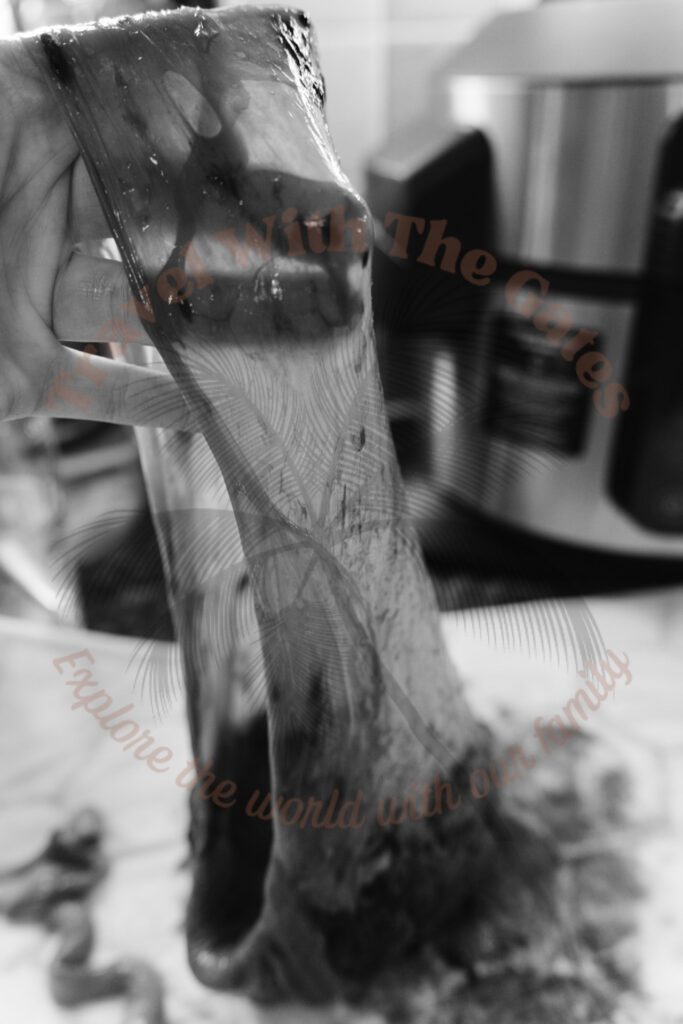
The Difference Between Settings
The contrast between my hospital and homebirth experiences showed me how much the setting can influence how we perceive and value the placenta. In hospitals, practicality and efficiency often take precedence, though with some advocacy and planning, honoring the placenta is entirely possible. Homebirths, on the other hand, naturally allow for a more personal and reflective experience.
The key takeaway? No matter where or how you give birth, taking a moment to see and learn about your placenta can transform your experience. It’s a chance to honor this organ’s extraordinary contribution to life, even in a setting where it might not typically receive much attention.
Retained Placenta and Its Risks
A retained placenta occurs when part of the placenta remains in the uterus after delivery. This condition can lead to postpartum bleeding and increase the risk of infection. In some cases, a retained placenta can cause additional complications that require medical intervention to safely remove the placenta.
Understanding the signs of a retained placenta is essential. If the placenta stays in the uterus longer than usual after birth, healthcare providers may need to manually assist in its delivery. Ensuring the complete removal of the placenta is crucial to prevent issues in the postpartum period.
From my own experiences, after my first two births, it took literally no time for my placentas to come out, but during my third birth, I had a fleeting moment of worry. What if we had to break this beautiful bubble after our perfect homebirth and end up in the hospital? It was a reminder that even in the most ideal scenarios, the unexpected can happen.
My advice to anyone in this situation is to relax and trust your body. Don’t let stress take over if your placenta doesn’t come out straight away. Sometimes these processes take a little longer, and trying to stay calm can make all the difference. Remember, your body knows what it’s doing, and more often than not, the situation resolves naturally.
What I Did With My Placentas-my Placenta Journey
Each of my placentas has had a special journey, reflecting the different stages of my motherhood experience. From hospital birth to homebirths, I’ve found ways to honor this incredible organ and its role in nurturing life.
Hospital Birth Placenta
During my hospital birth, I had the unique opportunity to see my placenta. Unlike what typically happens in hospital settings, my husband and I decided to bring it home. Our doula helped us make the most of this moment by creating a nourishing smoothie (which by the way the whole family tasted)with a small portion of it. The rest was encapsulated and made into a tincture. These capsules became a supportive resource during my postpartum recovery, helping me feel more balanced and energized.
Homebirth Placentas
My homebirth experiences allowed for even deeper connections with my placentas. In the calm, intimate setting of home, I had the freedom to observe and appreciate them as part of the birth process. We took photos while the placenta was still attached to the baby, marveling at its design and function.
After my son ceremonially cut the cord, we placed the placenta in the fridge to preserve it. The next day, it became a family experience—we gathered the boys and studied the placenta together. It was fascinating to explore where their sister had lived for nine months, showing them the veins and structures that sustained her life. To celebrate its role, we painted it in funky colors and created a beautiful placenta print keepsake that we treasure to this day.
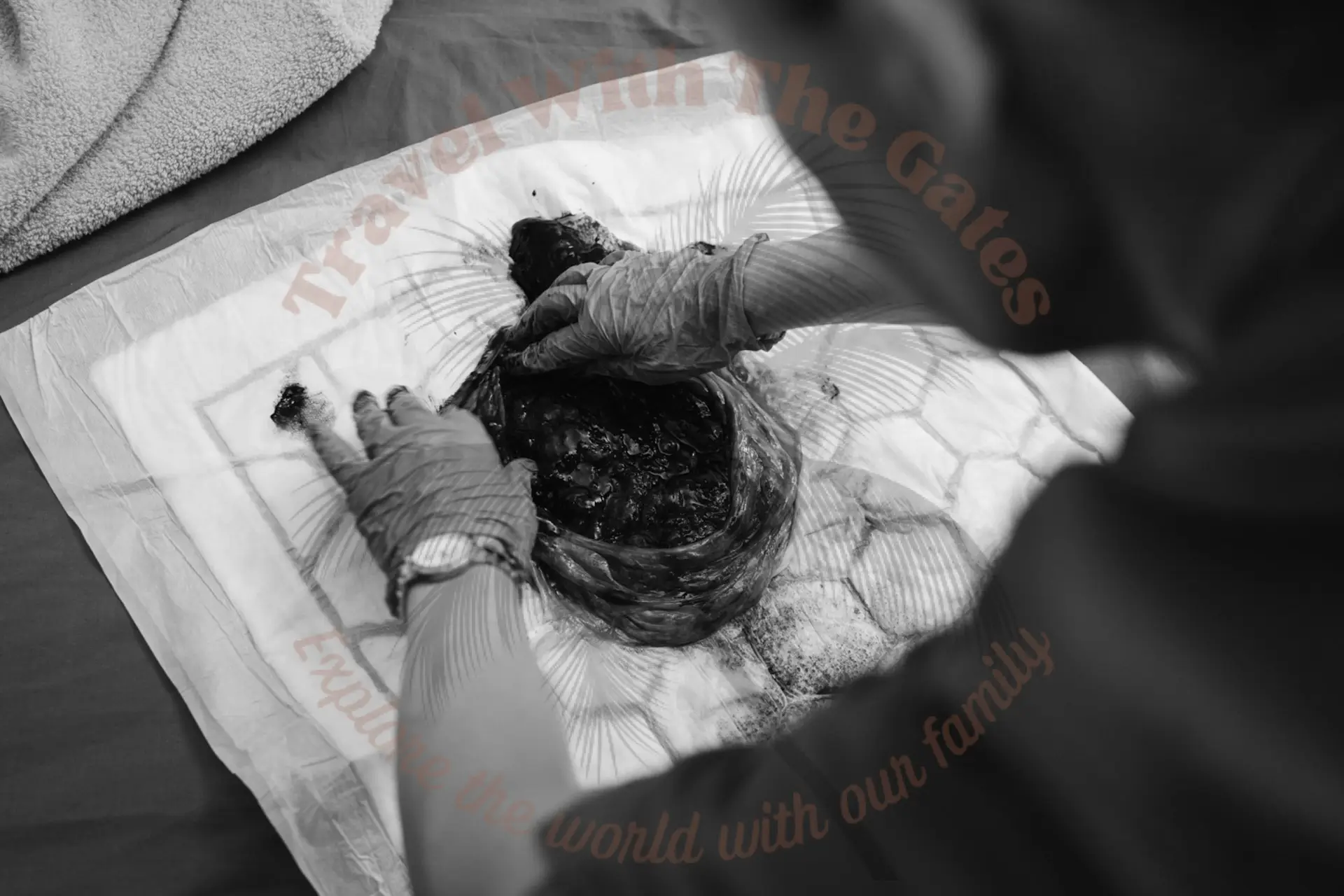
“We are the only species of mammal that doubts our ability to give birth.”
— Ina May Gaskin
Why I Honor My Placentas
Honoring my placentas has been a way to celebrate their incredible contribution to life. Each placenta played a vital role in nurturing my babies, and these small acts of gratitude felt like a fitting way to acknowledge their importance. Whether through encapsulation, art, or simply observing and learning, these practices deepened my connection to the miracle of life.
The Placenta in the Animal Kingdom: An Ancient Connection
The placenta is not unique to humans; it is a fascinating organ that exists across the mammalian world. Observing how other animals interact with their placentas reveals the deeply rooted and ancient role it plays in nurturing life, connecting us to the natural world in profound ways.
Thinking back, I realize that while the placenta was probably mentioned during biology lessons, I was largely ignorant of its importance. What is a teenager’s typical reaction to anything procreational, anyway? I vividly remember the first time it truly sank in what a placenta is. I was in my mid-teens, walking through my home village with friends, when we came across a sheep on one of the landowner’s properties. The sheep was dragging something on the ground, still partially inside her. My reaction was pure teenage disgust: Yuck, what is that?
After discussing it with my friends, it hit me—that sheep had just given birth, and the “yuck” was her placenta. At the time, I didn’t fully grasp the wonder of what I had seen. It was simply strange and foreign.
Fast forward to today, and it’s incredible to think about how much my perspective has changed. Becoming a mother transformed my understanding of birth and everything surrounding it. I now see it as one of life’s greatest miracles. Knowing firsthand the love a mother feels for her baby, I also came to view that moment with the sheep in a new light. The thought of being responsible, even indirectly, for separating a baby animal from its mother became unbearable. This realization was one of the many reasons I chose to become plant-based after the birth of our first child.
These personal reflections tie me to the broader animal world, where the placenta plays an equally miraculous role. Its presence across mammalian species is a testament to the universality of motherhood and the shared threads of life that connect us all.
The Mammalian Placenta: A Shared Lifeline
Nearly all mammals rely on a placenta to sustain their young during pregnancy. From elephants to bats, this organ functions as the ultimate life-support system, providing nutrients, oxygen, and protection while the baby grows. Despite differences in size and shape, the placenta’s role is remarkably similar across species, highlighting its evolutionary brilliance.
For instance, the placenta of a giraffe is enormous to accommodate its long gestation period and the large size of its offspring. Meanwhile, smaller mammals like mice have placentas that operate with incredible efficiency to support multiple babies at once.
How Animals Interact With Their Placentas
Unlike humans, many animals instinctively consume their placentas after giving birth—a practice called placentophagy. This behavior, seen in species ranging from cats to deer, provides a surge of nutrients to the mother and helps clean the birthing area, reducing the risk of attracting predators.
While placentophagy might seem strange to us, it’s a natural way for these animals to replenish nutrients lost during pregnancy and labor. It also highlights how deeply connected the placenta is to survival in the animal kingdom.
What Sets Humans Apart?
Unlike most mammals, humans have developed cultural and spiritual practices around the placenta instead of purely instinctual interactions. Some of us choose to honor it through encapsulation, art, or burial, while others may not consider it at all. This divergence illustrates how humans have the unique ability to assign meaning and ritual to something that is biologically universal.
The Ancient Evolution of the Placenta
The placenta is one of the oldest innovations in the evolution of life. Fossil evidence suggests that placental mammals have existed for over 100 million years, evolving to meet the diverse needs of different species. This ancient organ connects us not only to the natural world but also to our evolutionary ancestors, reminding us of the shared roots we have with all mammals.
A Personal Reflection on Connection
Reflecting on the placentas of other mammals deepens my appreciation for this organ. Knowing that it has supported life for millions of years and continues to play such a vital role in the animal kingdom reminds me of the profound connection between all living beings. It’s humbling to think that the same organ that nurtured my babies also sustains life in creatures as varied as dolphins and lions.
Placental Abruption and the Placenta Accreta Spectrum
Obviously, no one wants to hear about these horror stories while carrying their baby inside—it’s the last thing a pregnant person wants to think about. But I believe it’s always better to be safe than sorry. Knowing what signs to look for in these cases can literally save lives. Being informed helps you feel empowered to seek help quickly if something doesn’t feel right.
Placental abruption is a serious complication where the placenta separates from the uterine wall before delivery. This condition can cause bleeding and reduce the baby’s oxygen supply. Recognizing the symptoms, such as severe abdominal pain and heavy bleeding, is critical for early intervention.
Another complication, known as the placenta accreta spectrum, occurs when the placenta attaches too deeply into the uterine wall. Variants include:
- Placenta accreta: The placenta is attached too firmly.
- Placenta increta: The placenta invades the uterine muscle.
- Placenta percreta: The placenta grows through the uterine wall and into surrounding organs.
These conditions can lead to complications during delivery and often require specialized care.
Cultural and Spiritual Significance of the Placenta
Across cultures and throughout history, the placenta has been regarded as more than just an organ—it is often seen as sacred, a symbol of life, and a connection to something greater. These traditions reveal how deeply intertwined the placenta is with our understanding of birth, life, and the natural world.
Ancient and Modern Traditions
In many indigenous cultures, the placenta is honored in ceremonies that celebrate its role in nurturing life. Some communities bury the placenta as a way of returning it to the earth, often planting a tree over it to symbolize the continuing growth of life. This practice, found in cultures as diverse as Māori in New Zealand and various African tribes, reflects a deep respect for the placenta’s life-giving contribution.
In China, the placenta, or zǐhéchē (紫河车), has been historically revered in both traditional medicine and cultural practices. It’s amazing to think that in Traditional Chinese Medicine (TCM), the placenta has been considered a source of life-giving energy for centuries. They believe it can restore vitality, strengthen the immune system, and help with healing after childbirth. To this day, dried and powdered placenta is sometimes used as a remedy for fatigue and other conditions.
Modern Practices and Revivals
Nowadays, it’s heartwarming to see people finding new ways to honor the placenta, especially in homebirth settings. Practices like encapsulation, tinctures, cord keepsakes, and even placenta art are becoming more popular, allowing families to connect deeply with the role it played in sustaining their baby.
For me, making a placenta print keepsake and creating a cord keepsake were such meaningful moments. They gave me time to reflect on everything the placenta had done to support my babies. Encapsulation also made a big difference for me postpartum—it felt like a way to give back to my body for everything it had gone through.
Personal Reflection: Finding Meaning in the Placenta
It’s incredible to think that this amazing organ was keeping all my babies safe, nourishing them, and helping them grow for nine months. Across the world and throughout time, people have found ways to honor what the placenta represents: life, connection, and the ultimate act of giving.
For me, it’s become so much more than “just an organ.” It’s a reminder of the miracle of life and the amazing ways our bodies work. Honoring my placentas has been a way to show gratitude for the incredible role they played in my journey as a mother.
Why the Placenta Deserves More Appreciation
The placenta is often overshadowed by the baby’s arrival, and understandably so. Yet, when you pause to consider its role, it’s clear that this organ deserves more recognition for the miraculous work it does.
For nine months, the placenta is the ultimate multitasker—feeding, protecting, and nurturing a growing baby. It doesn’t just keep the baby alive; it adapts to their needs, communicates with the mother’s body, and ensures both mother and baby are as healthy as possible. That’s no small feat, and yet the placenta is often treated as an afterthought once its job is done.
Why We Overlook the Placenta
In many cultures, especially in modern medical settings, the placenta is seen as a byproduct of birth. It’s quickly discarded without much thought, and we lose the opportunity to reflect on what this organ has achieved. A lack of education and awareness often leads to it being dismissed as unimportant—something I can relate to from my own teenage years when I didn’t understand its significance.
Rediscovering the Wonder of the Placenta
After becoming a mother, my perspective changed entirely. Seeing my placentas, especially during my homebirths, opened my eyes to how incredible they are. Holding them, studying them, and even creating keepsakes with them made me appreciate their complexity and beauty.
What makes me even prouder is that my children were part of this journey. They were active participants in my homebirths, and I’ve made a conscious effort to raise them with an awareness of the placenta and its significance from a young age. Teaching them about the miracle of life in such a hands-on way has been one of the most rewarding parts of parenting.
Shifting Perspectives
Imagine if we shifted our perspective and started to see the placenta for what it truly is—a life-giving organ that symbolizes the bond between mother and child. By learning about its functions, honoring it through traditions or keepsakes, or simply acknowledging its contribution, we can start to give the placenta the respect it deserves.
Tips for Expecting Moms: Exploring Your Options
If you’re expecting and curious about how to honor your placenta, there are so many options available. The key is to find what feels meaningful to you and your family. Here are some tips to help you explore the possibilities:
1. Educate Yourself About the Placenta
Take time to learn about the placenta’s role during pregnancy and birth. Understanding its functions can deepen your appreciation and help you decide how you’d like to handle it after birth.
2. Communicate Your Wishes to Your Care Provider
If you’re planning a hospital birth, let your care provider know in advance that you’d like to see your placenta. Legally, the placenta belongs to you, so they must show it to you if you request it. If you plan to take it home, it’s still a good idea to discuss this ahead of time to ensure everything is prepared (e.g., storage or handling protocols). For homebirths, your midwife can guide you through options like creating a keepsake or preparing it for encapsulation.
3. Consider Ways to Honor the Placenta
There are many ways to acknowledge the placenta’s contribution:
- Encapsulation: Turn your placenta into capsules for postpartum recovery.
- Tinctures: Create a long-lasting tincture for hormonal balance.
- Art Prints: Use the placenta to create unique, natural art.
- Burying It: Return it to the earth and plant a tree as a symbol of growth and life.
- Cord Keepsakes: Preserve the umbilical cord in a meaningful shape or design.
4. Involve Your Family
If you have older children, involve them in learning about the placenta. Let them observe or help create keepsakes like prints or cord designs. This can be a wonderful way to teach them about the miracle of life and the importance of the placenta.
5. Keep an Open Mind
You don’t have to make a decision right away. Birth can be unpredictable, and it’s okay to adjust your plans based on how you feel after delivery. Give yourself grace to decide what feels right for you.
The Placenta’s Role in Pregnancy
The placenta is a temporary organ, yet its role in pregnancy is nothing short of extraordinary. It provides nutrients, regulates blood flow, and supports immune protection, ensuring the baby’s growth and development throughout pregnancy. From the first trimester to the end of pregnancy, the placenta remains an essential partner in creating and sustaining life.
As pregnancy progresses, the placenta starts to adapt to meet the baby’s changing needs. This remarkable process highlights the placenta’s intelligence, ensuring that both mother and baby remain healthy. The placenta truly embodies the miracle of life, offering a profound connection that endures even after its work is complete.
Conclusion: Honoring the Placenta, Honoring Life
The placenta is so much more than an organ—it’s a lifeline, a protector, and a connection between mother and child. It has been a source of awe and wonder for me throughout my journey as a mother, from my first hospital birth to my homebirths. Each time, it reminded me of the miracle of life and the incredible design of our bodies.
For nine months, the placenta worked tirelessly to nourish and sustain my babies, and taking the time to honor it felt like a natural way to express gratitude. Whether through encapsulation, keepsakes, or simply observing its intricate beauty with my family, these acts have deepened my connection to my children and their births.
It’s incredible to think that people across the world and throughout history have found ways to honor what the placenta represents: life, connection, and the ultimate act of giving. And as I reflect on my own experiences, I feel a sense of pride in passing on this awareness to my children, teaching them to respect and celebrate the miracle of life from a young age.
I hope this blog has inspired you to see the placenta in a new light, to explore its significance, and to perhaps find your own way of honoring it. Because, in the end, the placenta is a reminder of the profound connection we share—not just with our babies, but with all of life itself.
Frequently Asked Questions
Here are some common questions people have about the placenta, along with answers based on personal experiences and insights:
Can children participate in honoring the placenta?
Definitely! Involving older children in observing or creating keepsakes can be a wonderful way to teach them about the miracle of life. My boys were actively involved in my homebirths and even helped create a placenta print—an experience that was both educational and special for them. One of the most memorable moments was when our eldest cut his sister’s cord, a profound and meaningful way for him to participate in welcoming her into the world.
Can I ask to see my placenta after birth?
Absolutely! Many families create art prints using the placenta, preserve the umbilical cord as a keepsake, or bury the placenta as part of a meaningful ceremony. These keepsakes are a beautiful way to honor the placenta’s role in your baby’s life. Personally, I’ve kept the dried umbilical cords of all my children as special keepsakes. It’s so meaningful to know I have this tangible reminder of the connection we shared before they were born.
What are the benefits of placenta encapsulation?
Placenta encapsulation is believed to help with postpartum recovery by replenishing iron levels, balancing hormones, and boosting energy. While scientific evidence is limited, many mothers, including myself, have found it beneficial. For me, it provided a sense of balance and support during those early postpartum weeks.
Is consuming the placenta safe?
In most cases, consuming the placenta is safe if it is handled and prepared correctly. However, it’s important to work with a qualified professional who follows safe handling practices. If you’re unsure, talk to your care provider or midwife about your options.
Is consuming the placenta safe?
In most cases, consuming the placenta is safe if it is handled and prepared correctly. However, it’s important to work with a qualified professional who follows safe handling practices. If you’re unsure, talk to your care provider or midwife about your options.
Can the placenta be used for keepsakes?
Absolutely! Many families create art prints using the placenta, preserve the umbilical cord as a keepsake, or bury the placenta as part of a meaningful ceremony. These keepsakes are a beautiful way to honor the placenta’s role in your baby’s life. Personally, I’ve kept the dried umbilical cords of all my children as special keepsakes. It’s so meaningful to know I have this tangible reminder of the connection we shared before they were born.
What if I don’t want to do anything with my placenta?
That’s perfectly okay! Honoring the placenta is a personal choice. Whether you choose to encapsulate it, make a keepsake, or simply reflect on its importance, there’s no right or wrong way to approach this.
Can I take my placenta home from the hospital?
Yes, but some hospitals have specific protocols for releasing the placenta. Let your care team know in advance that you’d like to take it home, and bring a proper container or storage solution.
Are there cultural practices surrounding the placenta?
Yes, many cultures have traditions that honor the placenta. For example, some bury it as a way of giving back to the earth, while others use it in rituals to symbolize life and connection. Learning about these practices can inspire meaningful ways to honor your placenta.

Let’s connect
Follow us on Instagram for more stories, tips, and discussions on pregnancy and motherhood.”
